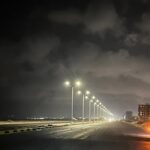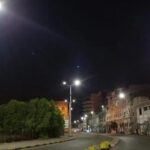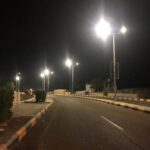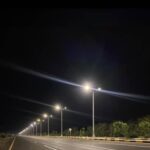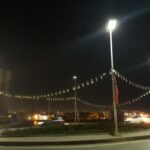What is a solar street light test report? Why is it crucial? We’ve gathered all the information you need in this blog to help you answer these critical questions. Since trade went global, consumers and business owners have had to change their buying and selling approaches. Consumers are now more careful of their purchases to evade fake/inferior products. While doing your due diligence before purchasing a street light, we recommend you peruse the test report. What should you look out for in a comprehensive test report? Discover this and more right here.
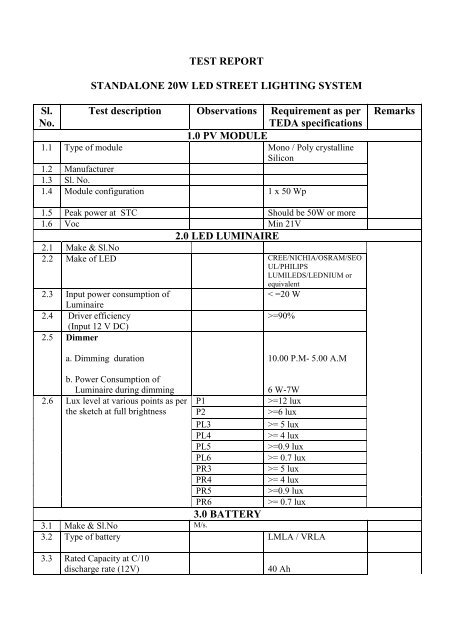
solar street light test report
What is a solar street light test report?
A solar street light test report is a document that explains how a street light performed after various tests. These tests gauge the performance, durability, and functionality of the streetlight.
Who should inspect a test report?
- Regulatory agency: agencies such as the National Institute of Standards and Technology (NIST) must go through the test report to verify compliance with applicable standards.
- Distributors: a supplier needs this report to maintain credibility and assure the customers.
- Certification bodies: independent bodies like the International Organization for Standardization (ISO) often require the results of the test report before issuing certification.
- Buyers: you should go through the test report to understand the expected performance and durability of the solar street light.
Key Components of a Perfect Solar Street Light Test Report
What makes the test report ideal? What should you look out for? Let’s dive in.
Performance metrics
Understanding how the solar street light performed during the tests is very vital. The test covers factors such as luminous flux, efficacy, and much more that you should understand and look out for. Luminous flux (measured in lumens) is the perceived amount of light a bulb emits. The manufacturers measure the luminous flux of various bulbs to help them choose the best light source. Comparing the lumens of various bulbs can help you choose the right solar street light for your needs. Understanding efficacy is equally crucial. Luminous efficacy (measured in lumens per watt) measures how well a light source produces light. An LED lamp with a higher efficacy requires less power to operate.
Color rendering index(CRI) is also another vital factor. CRI is the ability of a light source to reveal the colors of various objects faithfully compared to a reference light source. An accurate color rendering helps you identify road signs, traffic signals, and identifying other objects. The color temperature is of equal importance. It determines the perceived warmth or coolness of the light emitted by a light fixture. Choose the color temperature depending on your installation area. Use lower color temperature lights in residential areas and vice versa for industrial areas.
Energy efficiency
We cannot overstate the importance of a solar street light’s energy efficiency report. Energy efficiency is the balance between energy generation and consumption. You can gauge the efficiency of any system by examining factors like battery capacity, charging efficiency, and energy consumption.
The battery capacity is the total capacity of electricity a system can produce and hold. LifePO4 batteries are known for their larger battery capacity. A system with a higher battery capacity can operate for extended periods before it requires intervention/recharge. This could be crucial for remote installation areas. Charging efficiency, on the other hand, is the percentage of solar energy captured by the solar panels that the system can successfully convert into usable electrical energy. A system with a higher charge efficiency can maintain adequate energy reserves during inclement weather conditions.
The solar panel efficiency is also critical. The solar street light test report should indicate how the solar cells were affected by wind, hail, UV degradation, and other factors. A good solar panel should be able to generate energy even during low-light periods. Lastly, consider the total energy consumption of the system. Understanding the energy needs of the solar street light can help you design and configure the system to prevent wastage and ensure optimal functionality.
Durability and reliability
Any purchase must be reliable and durable to get value for your money. Look for evidence of durability and reliability in the solar street light test report. An ideal test report should have metrics to prove the product can withstand the test of time. The ingress protection(IP) rating can showcase the street lights durability against extreme weather conditions. The design of the solar street light housing also needs scrutiny. Ensure the materials used in the housing can prevent corrosion/degradation of the LED lights, sensors, and other components.
An ideal solar street light test report should also highlight the lifespan of the components. For example, ensure the lifespan of the battery and charge controller is over 12 years. We recommend looking for an expected lifespan of over 25 years for the solar panel and over 50,000 hours for the LED lights. The expected lifespan gives you confidence that the street lights can serve you for an extended period before replacement is due.
Battery performance
The battery is a vital component in a solar street light. Ensure you evaluate the performance details from a stress test of the battery. Understanding charge/discharge cycles should be at the top of your discovery list. A charge cycle is the charging and discharging process of a rechargeable battery. With each charge cycle, the battery undergoes chemical reactions, which often cause degradation of some components. The degradation can cause a loss in the battery’s capacity. Check the recommended charge cycles on the solar street light test report and plan for maintenance appropriately.
Confirm the depth of discharge(DoD)from the solar street light test report. The DoD indicates the level of energy used during a discharge cycle. The depth of discharge can affect the performance and reliability of a battery. A deep discharge occurs when you fully discharge a battery before recharging it. A shallow discharge, on the other hand, is partially dispensing the battery before recharging. Deep discharges can often cause shedding and poor conductivity.
Real-world testing data
Manufacturers test the solar street lights in controlled laboratory conditions. The information from such a test could differ slightly from a test done under real-world conditions. Inspecting real-world data has various advantages for you as a buyer. The data shows how the streetlight performs under varying weather conditions to ascertain its reliability to withstand the rigors of everyday use. The data also allows you to verify whether the street light adheres to its advertised specifications and standards. Lastly, the testing data helps you to make informed decisions based on empirical evidence rather than relying solely on theoretical specifications. Take your time to scrutinize this part of the solar street light test report.
Conclusion
Prior to finalizing your purchase decision, we recommend you explore the solar street light test report. This document offers valuable insights into what you can expect out of your purchase. Do you have any questions? Contact us.







